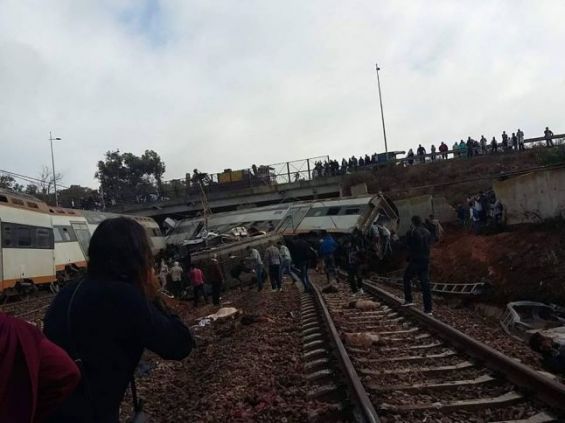On Tuesday, October 16th, near Bouknadel, an ONCF train run off rails, killing 7 people and injuring more than 80 others.
A few hours after the crash took place, a royal palace communiqué announced that an in-depth investigation has been opened to determine the reasons that caused the tragedy. And while several explanations and hypotheses made it to the internet about the possible causes of the train’s derailment, a source from ONCF gave Yabiladi its version of the story.
The same source stressed that the train crash might have been just a result of the lack of maintenance of rolling stock.
Monitoring of rolling stock
Speaking to Yabiladi, the same source who requested anonymity, denied all rumors circulating on social media. «According to my professional experience, when 20 trains have taken the same track without encountering the same problem, it is necessary to check the origin of the issue which for me is related to the status of the rolling stock and its monitoring», said the ONCF source.
«There is no railroad switch near the spot where the accident took place. Moreover, when a train derails and there is no obstacle in front of it, the damage done is very minimal».
For the expert, the derailment of the train occurred «after the train’s two first wheels run off rails, which are commonly known as the train’s axle». The train, then, went left before its locomotive hit the Bouknadel’s bridge.
The ONCF expert said that «everyone inside ONCF knows that there is a real problem with rolling stock». «But it would be surprising to me if they acknowledge it as it would put them in troubles», said the same source.
According to the expert, the track used by train number 9, which crashed yesterday, was «newly constructed and is frequently used by the TGV».
Other problems that led to the accident
Our source stated that the maintenance department has a maintenance dog, which allows every technician to record their observations on the condition of trains. The working conditions of technicians have deteriorated significantly in the recent years. «The number of trains operating is huge compared to the small number of technicians monitoring the condition of rolling stock», which affects their work.
In addition to that, the same source pointed out to the «pressure put on technicians» who report flaws.
«Sometimes, some say that rolling stock meets safety standards when it is not. They take risks so that they will not be sanctioned later», revealed our source.
«This can easily endanger the lives of hundreds of people traveling on a risky machine», concluded the ONCF source.





 chargement...
chargement...












